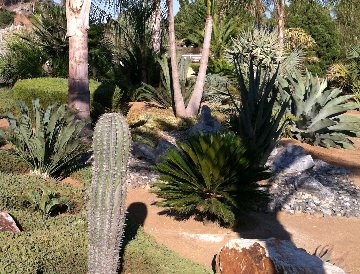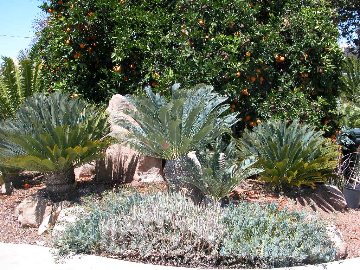Nurseries and plant specifiers have been promoting the use of drought tolerant plant material in order to feed the seasonal demand by landscapers, homeowners, and collectors. Reflecting back on the last few years of the market shift to a xerophytic emphasis has shown that cycads can hold their own when used in drought tolerant landscape plantings.

This is, of course, not new information to anyone who has some knowledge of cycad native habitat worldwide. Approximatelyhalf of all known cycad species have significant drought tolerant capabilities. These would consist of cycads whose native habitat is in the dryer regions around the globe. These include many blue Encephalartos species from Africa, many fine leaflet forms of Dioons from Mexico, and many of the Macrozamia species from Australia. Even some species that are native to more tropical or subtropical habitats have shown to be surprisingly resilient when they are established.
Here in southern California many of the larger, more established cycads could actually survive on the seasonal rainfall alone. It is worth noting that larger, more established specimens have developed a mature root system and a significant size caudex (trunk), both of which help to feed and maintain hydration of the plant system during times of drought.
Cycads have proven their versatility when combined with tropical theme landscaping, as well as xerophytic landscape plantings, and they are always able to maintain their own identity.

This isn’t to say that all cycads thrive in all positions in the garden. As you study and try various species, you will find that nearly every species would have subtle location preferences if they could make that choice for themselves. As an example, many of the green species of Encephalartos can be grown in full sun if there is significant humidity in the air and little or no seasonal frost. While that same plant, in a dryer, warmer location may benefit from receiving just morning sun for half a day, and then receiving partial or full shade for the remaining part of the day. Plant placement is a subtle but significantly important variable that is worth consideration at the time of planting. As always try to group plants of compatible material that will have similar water requirements.
Grow and prosper,
Keith